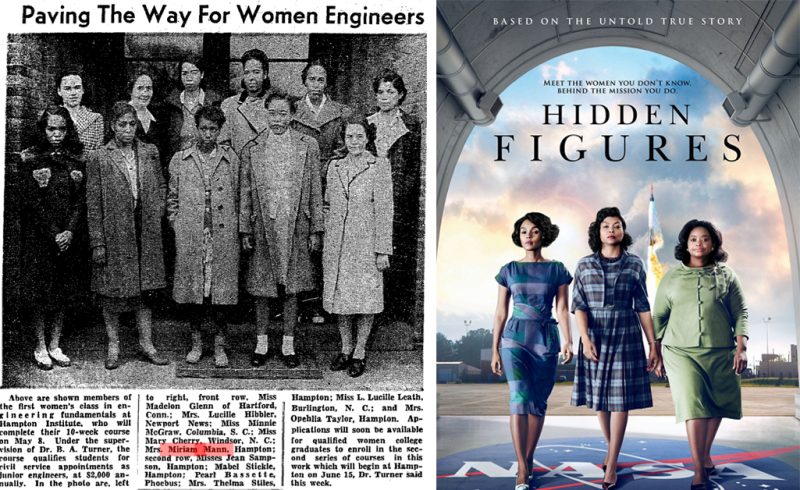Miriam Danielle Mann is walking with purpose in a photo submitted to the Washington Post for their Historically Black project. It’s 1943, and she is striding down a street in Hampton, Va. She is wearing heels, a turban and a coat with two large buttons, her skirt’s hemline just appearing from underneath.
Mann is the grandmother of Duchess Harris. She was also one of the first black female computers hired by the predecessor to NASA, the National Advisory Committee for Aeronautics (NACA).
The way Mann is dressed is vastly different from the uniforms worn by most employed black women of the time. It represents an economic opportunity most black women were unable to achieve.
“For a black woman to have that level of education and professional respect then, was certainly something to be proud of,” Harris said. “She looks upper-middle class,” she added.
“Human computers” were hired to do the math for engineers with not much more than a pencil and a slide rule. They performed arithmetic, calculus, differential equations, trigonometry, etc.
Computing was low-level work left for women, typically white women. White female computers had worked at Langley Research Center since 1935. In 1943, NACA began to recruit black female mathematicians due to the labor shortages associated with WWII.
Mann received word of the job opportunity while living at Hampton University with her husband, Bill, a professor at the school. Mann had graduated from Talladega College with a major in chemistry and a minor in mathematics. As part of the application process, black female applicants had to complete a 10-week course at the Hampton Institute as the university was known at the time. Mann was one of the first to take the course. After completing it, she was qualified for the computer job for the salary of $2000 a year (equivalent to a little more than $25,000 in 2016).
Harris found that few people believed her when she talked about her grandmother. It was hard to imagine a black woman working for NASA over 20 prior to the Civil Rights Act. This motivated Harris to write a book about her grandmother and other black female computers. While researching the book, her mother gave her the picture of Mann walking to work.
“This was a great opportunity for a very, very small percentage of black people,” Harris said.
The era is known as the “time when computers wore skirts.” That line is frequently used by Katherine Johnson, a contemporary of Mann’s who also worked as a black female computer at Langley, The Washington Post reported.
When NACA became NASA in 1958, there were black female computers employed. By 1960, they were playing an instrumental, if hidden, role in the space race.
The story of the black female computers at NASA is the subject of a book by Margot Lee Shetterly called “Hidden Figures.” That book has been turned into a movie starring Taraji P. Henson, Octavia Spencer, and Janelle Monáe. The movie arrives in theaters in January 2017.
Johnson is the main character of the book and the movie. She was picked from the pool of black female computers and assigned to an all white male research team. John Glenn personally requested that Johnson hand-check all of the calculations of trajectory that the new computers had come up with for his 1962 mission that orbited the earth. Mann helped work on some of the calculations for Glenn’s space flight.
A year later, Mann received a letter from NASA congratulating her on completing 20 years of service.
